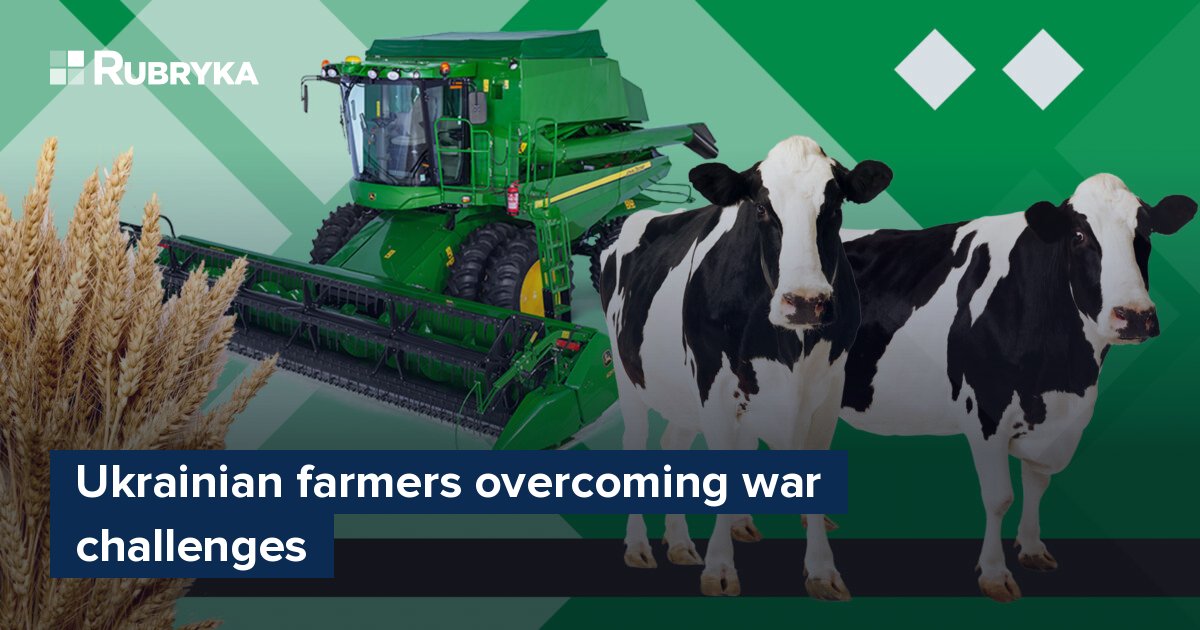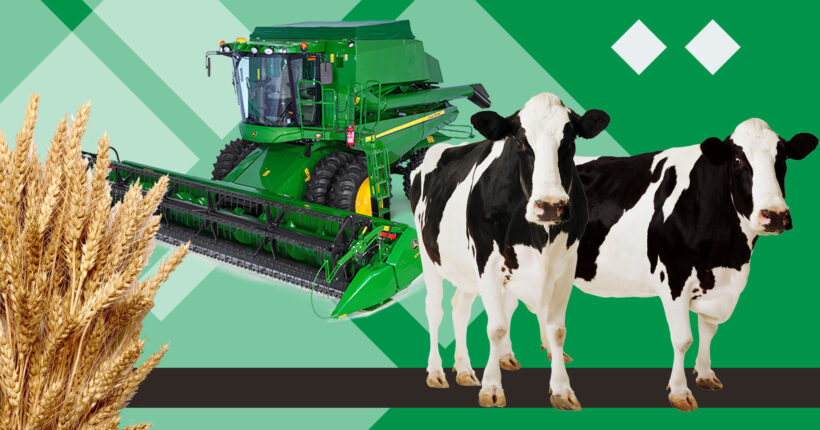
What is the problem?
Animal husbandry in Ukraine — "before"
According to the State Statistics Service of Ukraine, at the beginning of 2021, 19,400 livestock production enterprises of various forms of ownership were engaged in producing milk, meat, eggs, and other livestock in Ukraine. Before the start of a full-scale war in February 2022, this industry was growing actively. In 2021, meat production had increased by 5.5%, compared to 2020, and milk production had increased by 2.8%.
The growth of this industry was gradual and can be explained by several measures implemented by the Ukrainian government after 2014, like a ban on the import of meat from russia or the provision of financial and infrastructural support for the development of local agricultural production. In addition to state support, farmers also found new solutions: they raised local breeds of animals that are more adapted to the climate and soil conditions of Ukraine, they cooperated, and introduced modern technologies.
The livestock industry has also faced challenges that farmers worldwide are familiar with: declining animal populations, rising prices for feed and other resources, as well as climate change. But despite this, growth was still possible.
All that changed with the outbreak of war on February 24, 2022, which left farmers facing new obstacles: shelling, the need to evacuate, logistical challenges, and power outages that put the production of any food and feed at risk of complete stoppage.
$51 million lost in 2022
According to the statement of Olena Dadus, the head of the Directorate of Animal Husbandry and Breeding of the Department of Agrarian Development of the Ministry of Agrarian Policy, compared to last year, Ukraine's livestock industry has decreased production by 15%, as regions of Ukraine where the largest number of farms were concentrated at the beginning of last year were affected. These are the Chernihiv, Kharkiv, Sumy, Kyiv, Donetsk, Luhansk, Mykolaiv, Kherson, and Zaporizhia regions, where at the beginning of 2022, one-fifth of the total amount of meat in Ukraine, about a third of dairy products, and almost half the amountof eggs – 44.8% – were produced.
Losses from animal deaths and farm damage as of November 2022 were estimated at approximately $51 million. It is obvious and, at the same time, tragic that these are not the final numbers. There is no comprehensive data about the number of livestock enterprises destroyed due to military actions in Ukraine because the war is not over, and the losses from the destruction of either agriculture or any other sphere of the economy are increasing daily.
At the moment, it is only known that the companies continue to record their losses and gather the evidence to collect compensation from russia later.
New challenges
After the beginning of russia's full-scale invasion of Ukraine on February 24, 2022, agriculture suffered terrible losses. The war led to the damage or destruction of many farms. Only a few farmers managed to evacuate their animals from areas under russian occupation. The war has left millions of people internally displaced, leading to depopulation in many rural areas, which results in reduced demand for meat and dairy products there.
Farms also suffered significant financial losses due to the declining market. A vivid example is a cow farm in the village of Muzychi in the Kyiv region.
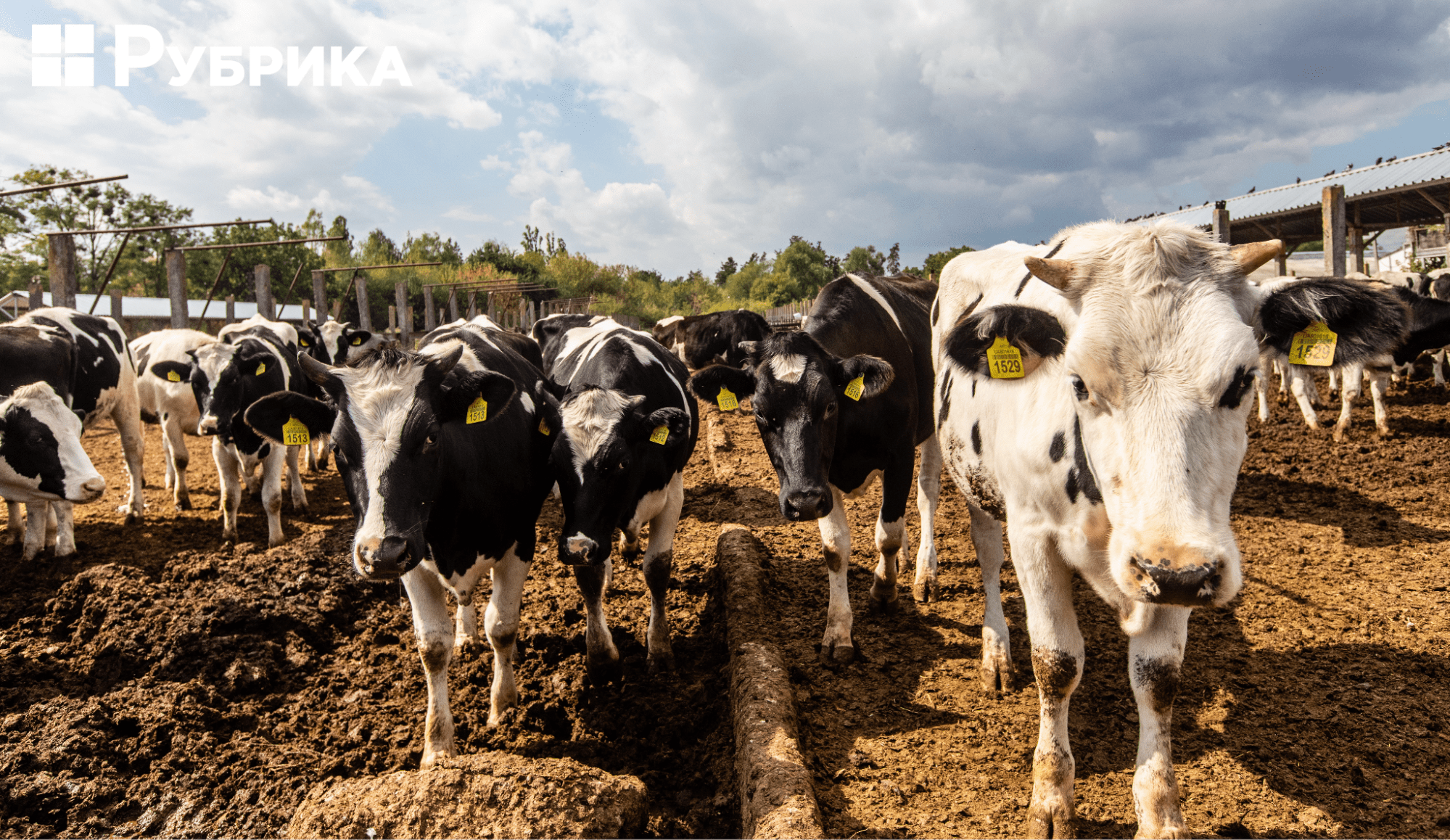
In March 2022, russian and Ukrainian military units were fighting within three kilometers on either side of the barns. Shells were whistling over the houses, and craters from the missiles slamming into the ground are still visible a year later. The workers remember how they boarded up barn windows after they were blown out by the blast wave.
The farm was isolated from the outside world, and the workers could neither get to work nor leave. From among the 35 staff, only five milkmaids remained, who had no electricity to help them with the 650 cows.
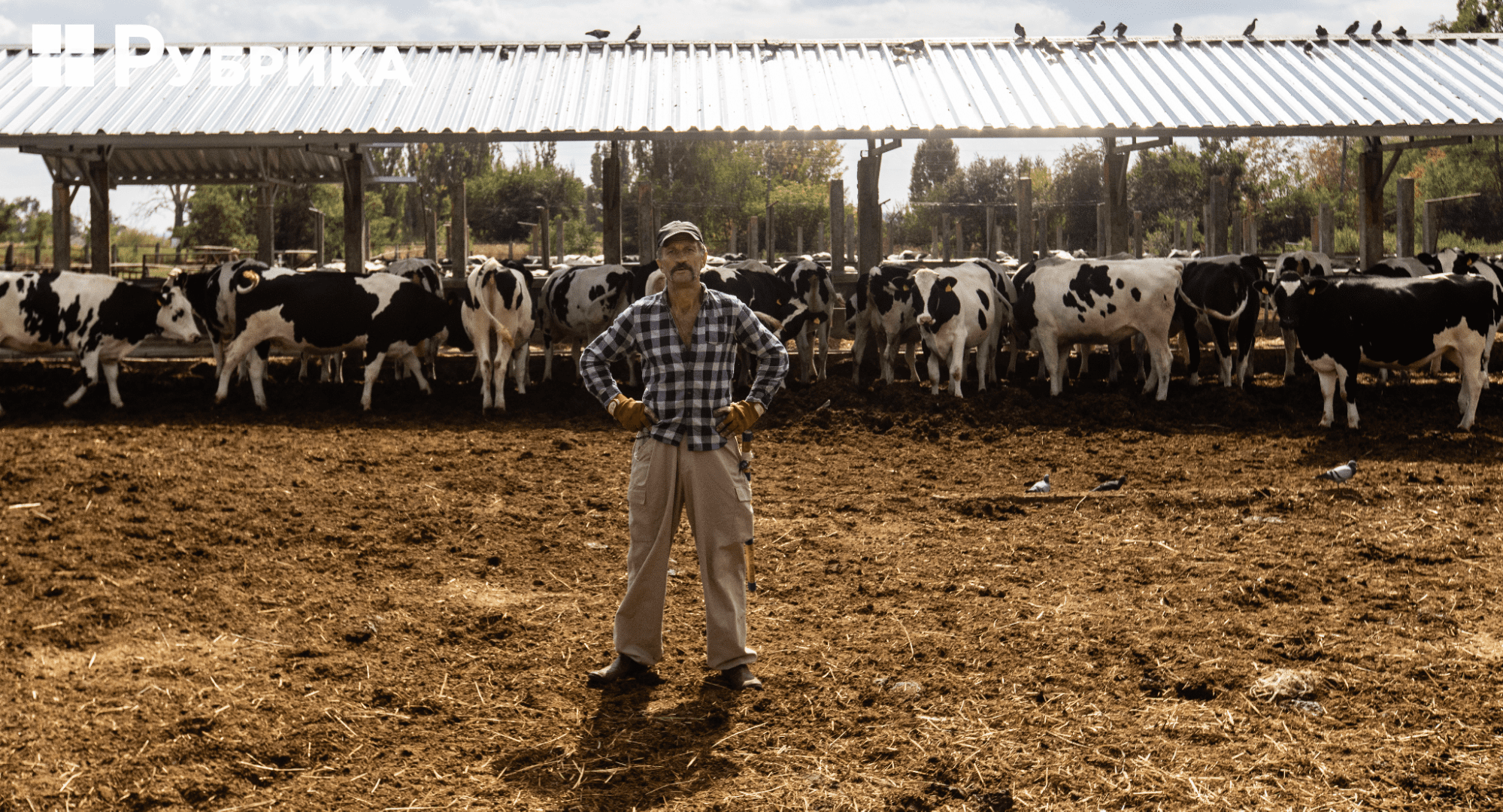
The electricity supply was unstable due to the fighting, so using milking machines and refrigerators to store milk was impossible. In the end, it was impossible to transport the milk to the milk factory because russian troops had blocked the roads.
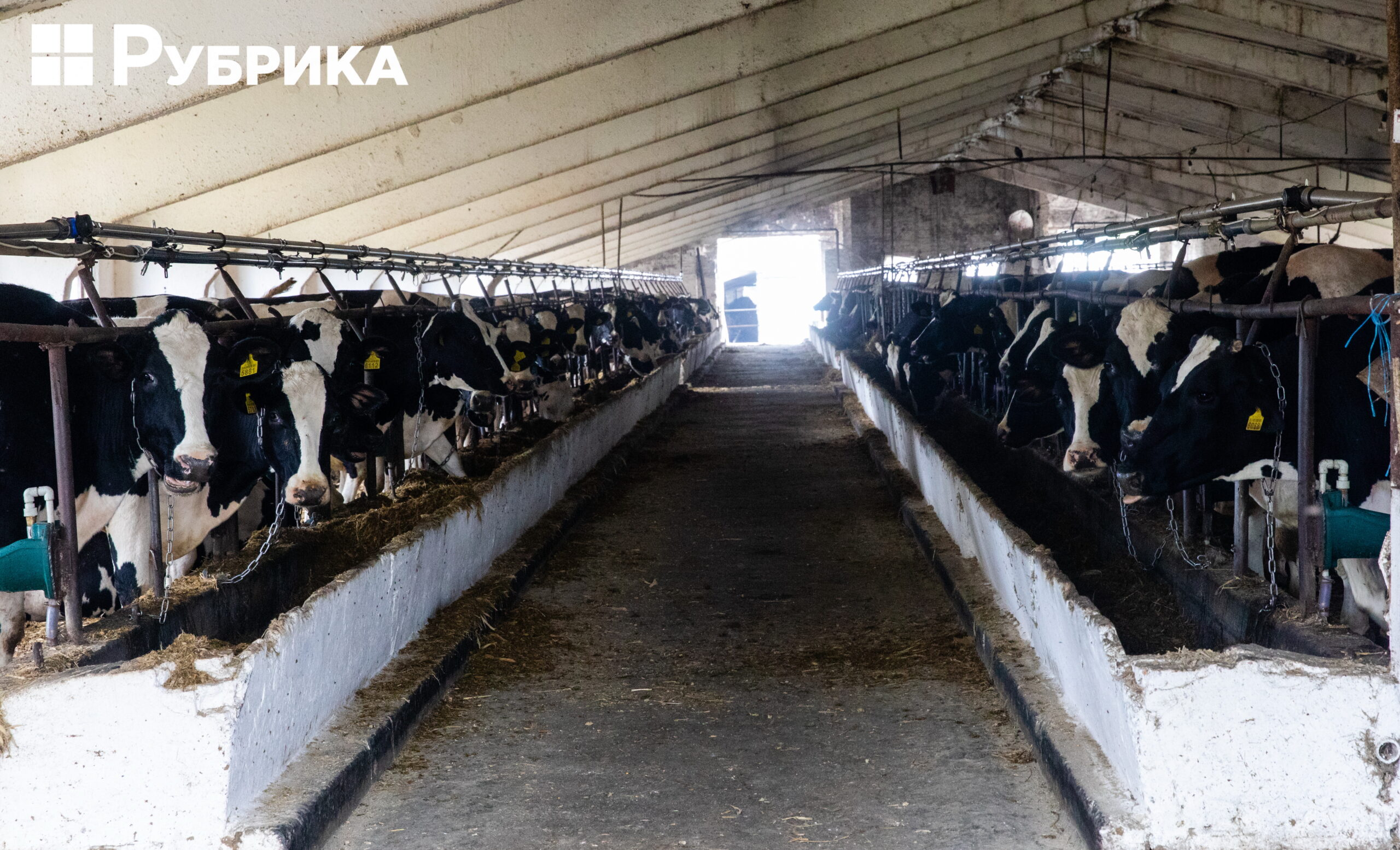
"If you are a little familiar with farming, you know that you cannot stop milking cows because then they will stop giving milk," Olha, the farm's zoologist, told Rubryka. The staff had to reduce the milk yield and optimize the labor rotations in order to save the farm. And to store new milk somewhere, it was distributed free of charge to village residents. Under the same circumstances, some farms simply poured milk down the drain. In both cases, farms lost profits.
An interesting question for research is the impact of a stressful situation for animals on the quality of products. According to Yurii, the director of the Muzychi farm, there were no changes in quality:
"We analyzed the milk and noticed that there was the largest amount of milk in the first days of the war — we did not know where to put this milk. No explanation was found for this phenomenon. The quality of milk, in terms of protein and fat, did not change; but the amount of milk decreased."
Due to the war, milk production had to be reduced, and a year later, it still has not been possible to restore it to previous levels. According to Yurii, the farm's productivity is 30-40% lower than before the war. According to an optimistic forecast, increasing production to the previous level will take at least half a year.
The story of the farm in Muzychi is a typical example of the problems that farmers in war-torn regions continue to face. With the beginning of russia's attacks on the energy system of Ukraine in the fall, new challenges appeared in all areas of Ukraine: both in the de-occupied territories, as well as areas that did not see hostilities.
Blackouts on livestock farms
Almost all modern livestock farms are directly dependent on electricity.
No electricity can often mean no water. Many farms use water from private wells and need electricity to get water. For the animals, lack of water can lead to health problems, and even death.
Farms without electricity cannot be properly regulated, as the required temperature, ventilation, and other farm controls may depend on automated systems that require constant power supply. Without electricity, animals are forced to live in conditions unsuitable for their health. And blackouts can make it impossible to process and properly store feed.
Some farmers use generators to ensure the operation of the pumping station and fans. There are also farms in Ukraine that use stove heating to maintain the temperature, independently from electricity. But a large number of automated processes, for example milking with the help of special devices and the operation of refrigerators; cannot be provided by generator power. In addition, the costs of diesel or gasoline are enormous and can significantly increase the product's price, making it uncompetitive.
Despite this, during the year of the full-scale war, Ukraine exported 39% more dairy products than in 2021, and the number of exports reached $344.6 mln. Rubryka took a look at the solutions Ukrainian farmers have found to not only preserve but increase production.
What is the solution?
Personal power plant and phased production
One hundred kilowatts of electricity are needed to fully support all the processes at the farm in Muzychi, but during outages, it had to work on the capacity of an outdated 46-kilowatt power station. There were power outages in Muzychi even before the full-scale war. The electricity went out during high winds, rain, or snow, if only for a few hours. Then, it was a rarity rather than a regularity. During pre-war blackouts, the power station served as a backup.
According to Yurii, the farm was prepared for power outages. They performed preventative maintenance on the power plant and even repaired an old, barely-working generator. The farm team decided to use the diesel fuel supply, only for the needs of the backup power plant. That is why the farm switched to the power plant during regular blackouts that sometimes lasted for 12 or more hours.
There was not enough power for all the processes, and the production was divided into several stages:
- Milking: Cowsheds were supplied with electricity so that milking machines could be connected to a cooling system
- Feed preparation and other service processes
Disconnections often occurred during the milking, and the process was interrupted. Still, the employees always found ways to remedy the situation. The human factor helped the farm cope with challenges.
The work in the cowsheds is continuous throughout the day — the electricians always worked in shifts and were always ready to switch between the main network and the backup power.
Farm workers get it all done in 4 hours a day
On a cow farm in the village of Khrushchivka in the Cherkasy region in central Ukraine, there is a modern milking hall — a "carousel." When the cow enters its spot and the device is connected, the information on the level of milk yield and the amount produced for one milking are visible on a gauge. Such a system runs on electricity, and switching to manual milking is impossible – as only three workers serve 800 cows.
Therefore, since the beginning of power outages, the farm switched to diesel generators purchased back in 2020. Thus, 80% of the working potential of the generators went to the milking process. The farm says milking has not been affected by the blackouts and is now producing 20% more milk than before the full-scale invasion.
Another farmer, Mykhailo Travetskyi from the Chernihiv region, who has 30 cows, also uses a generator. It provides the cows with water and milking when there is no power. Refrigerators do not work without electricity, and the generator does not produce enough power for them, so the sub-zero temperature comes in handy here: Mykhailo leaves the milk in a cellar, where it cools and does not spoil.
"Fortunately, we have a furnace for heating, and it provides warm water. We maintain all the milking hygiene," the farmer said on his YouTube channel.
According to his observations, the absence of electricity saves time because all processes need to be done much faster. Under normal conditions, it takes about two hours to milk a cow on his farm and another hour to separate the milk. But without electricity, both processes run simultaneously.
Feed production is something that not only cattle farms but also pig farmers or poultry farmers do. The feed mill is dependent on an external power supply, and interruptions lead to a stoppage of the installation, or faulty operation. According to the manager of a farm in Cherkasy region, Serhii Vyrvykyshko, at least an 80-kilowatt power station is necessary in this case. The cost of an installation such as this is about $13,500, which not all farms can afford. Therefore, some farmers made fodder at night, when during power outages were less frequent, or shorter. During the day less powerful generators provided ventilation of pig houses, heating of poultry houses, and operation of refrigerators for milk or ready-made products.
Farms operating on renewable energy
Farms can also use solar panels and other alternative energy sources to ensure resilience during power outages.
The turkey farm "Zbinskyi" in the Zhytomyr region puts a lot of effort into ensuring its autonomy. Preparations for energy independence began long before the war, so the farm was equipped with a generator and its own solar power plant. This project cost the farm €10,000 but proved effective during long-term outages.
Under normal conditions, the 30-kilowatt solar power plant on "Zbinskiy" works for the farm's needs. The extra power is discharged into the general network at the "green tariff." This economic reward mechanism for generating electricity from renewable energy sources,introduced in Ukraine in 2015, allows not only to save on electricity consumption from the network but also to earn on its generation from renewable energy sources.
In emergency shutdowns, an automatic reserve input unit with a special switch was installed at the "Zbynskyi" farm. In the event of a power outage, the system automatically disconnects the farm from the main grid, and switches it to autonomous power mode using the batteries previously charged by solar energy. Everything is designed to fully cover the farm's needs — from maintenance to fodder mixing. Thanks to this, a small farm producing 10 tons of turkey meat per year is entirely autonomous. However, such autonomy is more expensive than general electricity networks.
Evacuation of farms
If power outages last for a long time and there are not enough additional power sources, the farm's operation may become unfeasible, and it will be necessary to evacuate the animals to suitable living conditions. The need for evacuation may also arise when hostilities occur directly on the farm's territory.
Volodymyr Alyokhin, a Ukrainian farmer from the Donetsk region in Ukraine's east, faced such a situation. He bred sheep for many years in the village of Pavlivtsi, but with the beginning of russia's full-scale invasion, fighting began in the farmer's village, and russian troops destroyed his house. Only 400 of the herd, which numbered over half a thousand, survived.
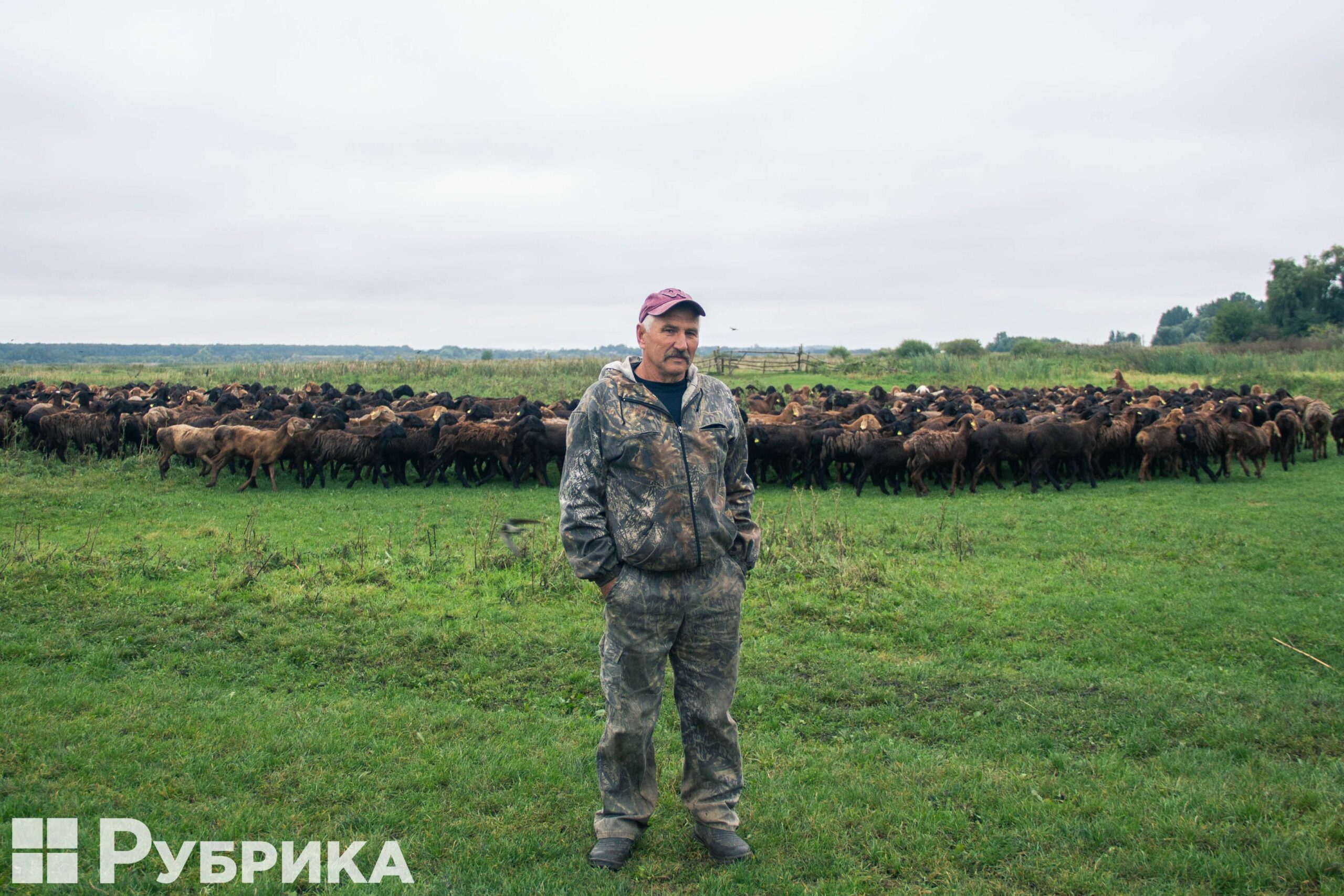
Despite Volodymyr's attempts to save the animals by driving them away from the pasture, a hundred were killed by one explosion when the first mortar shelling began. The shepherd's priority then was to evacuate from the shelling. Volodymyr did this on foot with his flock, and had to walk almost 50 kilometers.
At first, the farmer was looking for a place for the flock alone. He visited several regions, more than 5,000 square kilometers with great communities and farms, but the prices were also quite high. Pasture lease prices sometimes reached more than $5,000, and the farmer did not have such funds. Later, Alyokhin turned to his fellow farmer, Volodymyr Melnyk, whose farm is at the other end of Ukraine, 700 kilometers west of Donetsk region, in Volyn, northwestern Ukraine. Volodymyr transported the animals by trucks, and the farmers combined their herds. Now they do all the work together, and split the income in half.
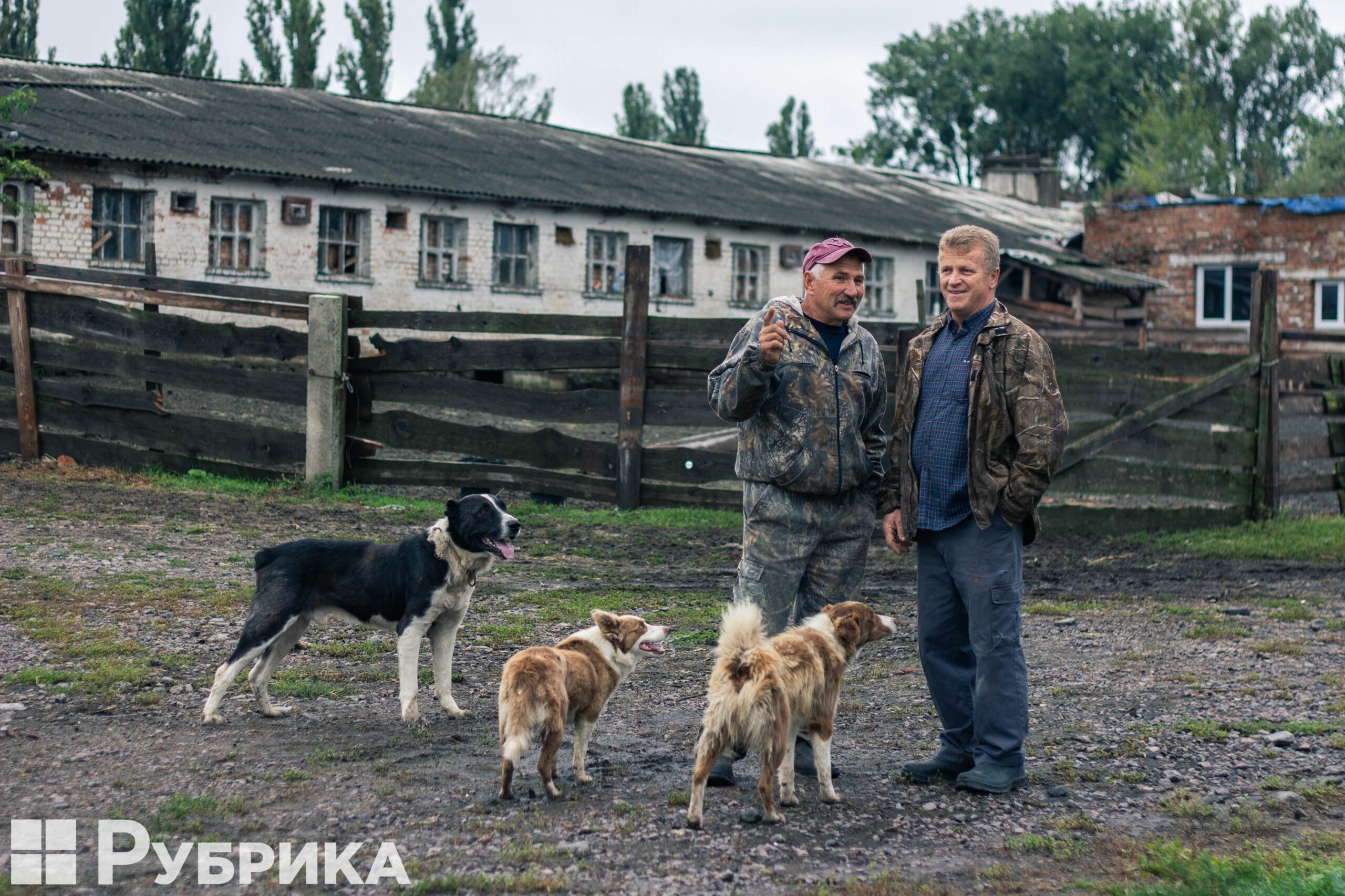
The story of Volodymyr Alyokhin became known throughout Ukraine, but his case is not the only one. Many farmers have to evacuate from hostilities not only with their families but also with their animals — and sometimes even with their bees. Ukrainians are saving their apiaries from the war by carefully transporting the beehives in trucks to safer areas. Volunteers, charitable foundations, the state, and even the army are helping them with this.
Since the beginning of March, Alyokhin's farming enterprise in the Mykolayiv region has suffered from constant shelling by the russian army. The farm was located in the gray zone, between the positions of the Ukrainian military and the russian invaders. The farm owner appealed to social media to look for ways to save the animals. Eventually, Andriy Kovych, the deputy mayor of the city council of Drohobych, a city in western Ukraine's Lviv region, saw his Facebook post. As a result, three volunteers came to the Mykolaiv region to organize an evacuation attempt – knowing that the previous attempt to evacuate had failed and the cars had to turn around when they had been shot.
Preparation for evacuation lasted four days, and the process itself was finished in about 3 hours. The cows were moved into two trucks and taken during cloudy weather to provide some cover from russian drones, which had fired at the cars during the previous evacuation. The Armed Forces of Ukraine provided cover for the evacuation. The cows arrived in Drohobych in terrible condition — with shrapnel wounds, some of them had to have surgery, but later the animals recovered and are now feeling much better. The city council plans to rebuild one of the vacant premises and help the farmer restart production.
"After Ukraine's victory, our soldiers will return, and there will already be farms here, there will be jobs here, there will be life here," says Andriy Kovych.
Although the situation in the agricultural sector in Ukraine remains a challenge, today, it continues to develop.Farmers need to plan and provide backup energy sources, emergency power systems, and other measures to ensure energy security on livestock farms, especially in crises such as power outages due to attacks on the power system.

Evacuating bees: how Ukrainians save most valuable insects during war

Evacuating flock of sheep across Ukraine and finding new home: incredible story of Donetsk farmer

Milk for donations, white hellebore for russians, and incredible people: how farmers in Kyiv region survived hostilities
This project is funded through Transitions' solutions journalism program, which aims to strengthen the adoption of solutions journalism across Central and Eastern Europe.
Newsletter
Digest of the most interesting news: just about the main thing



